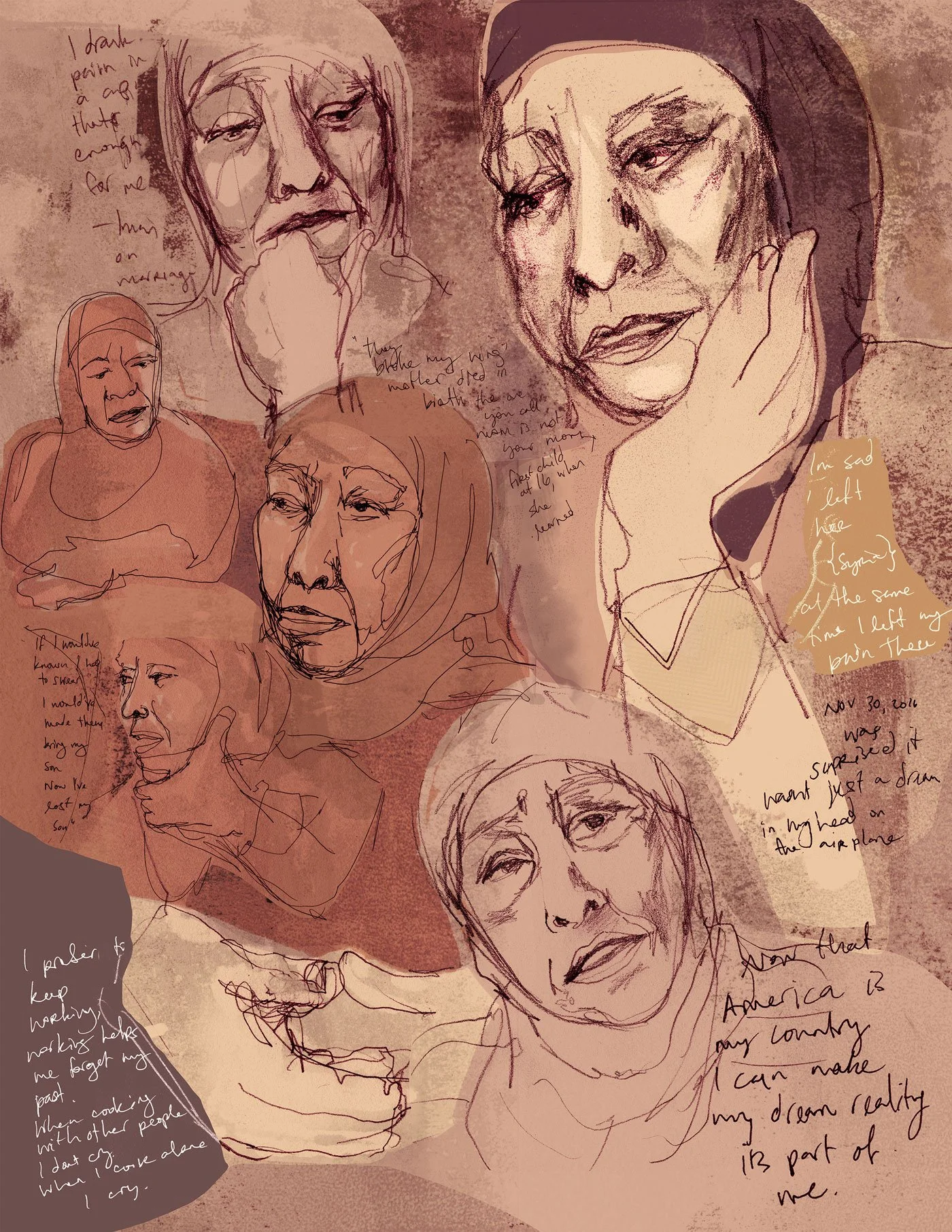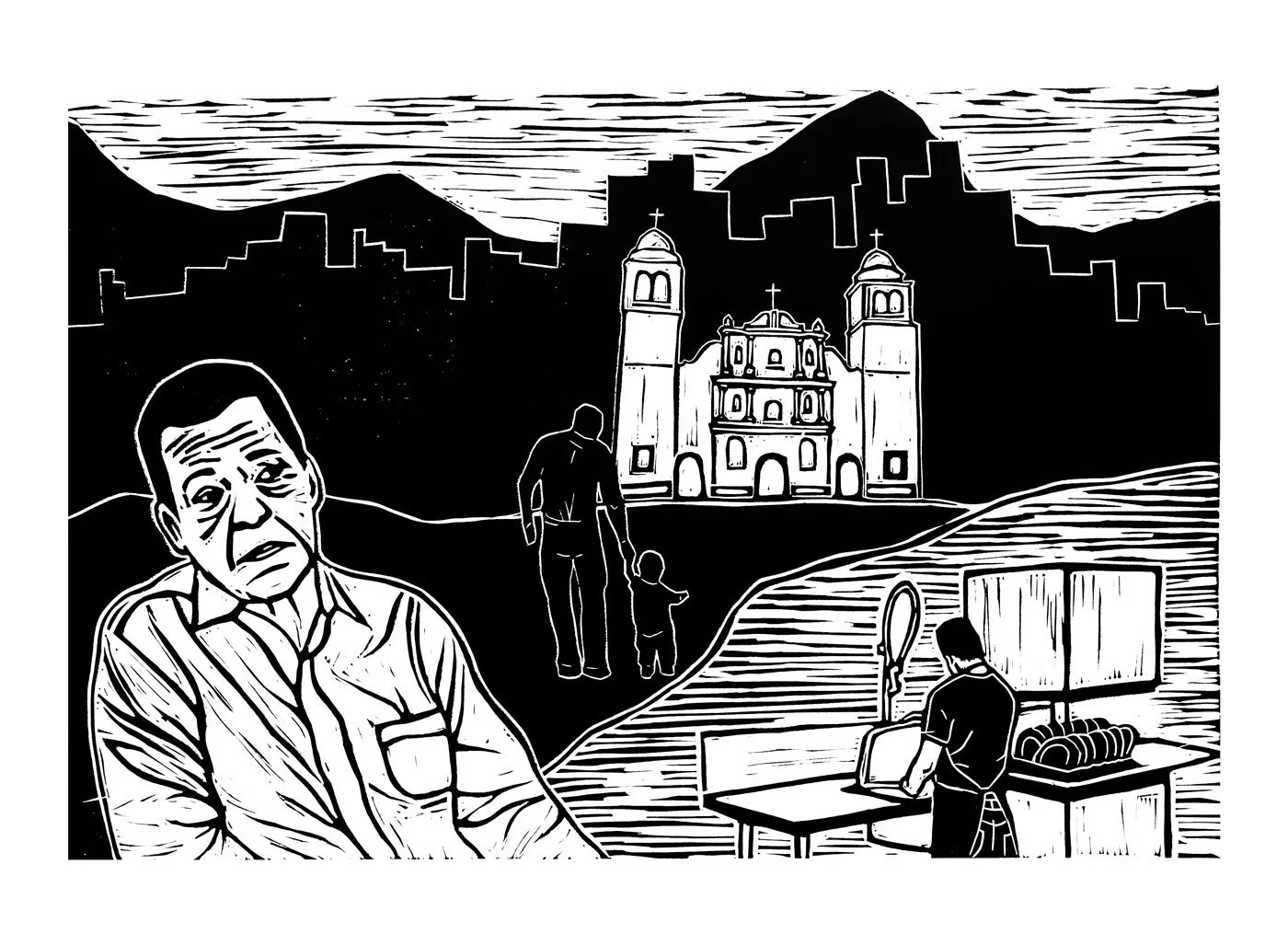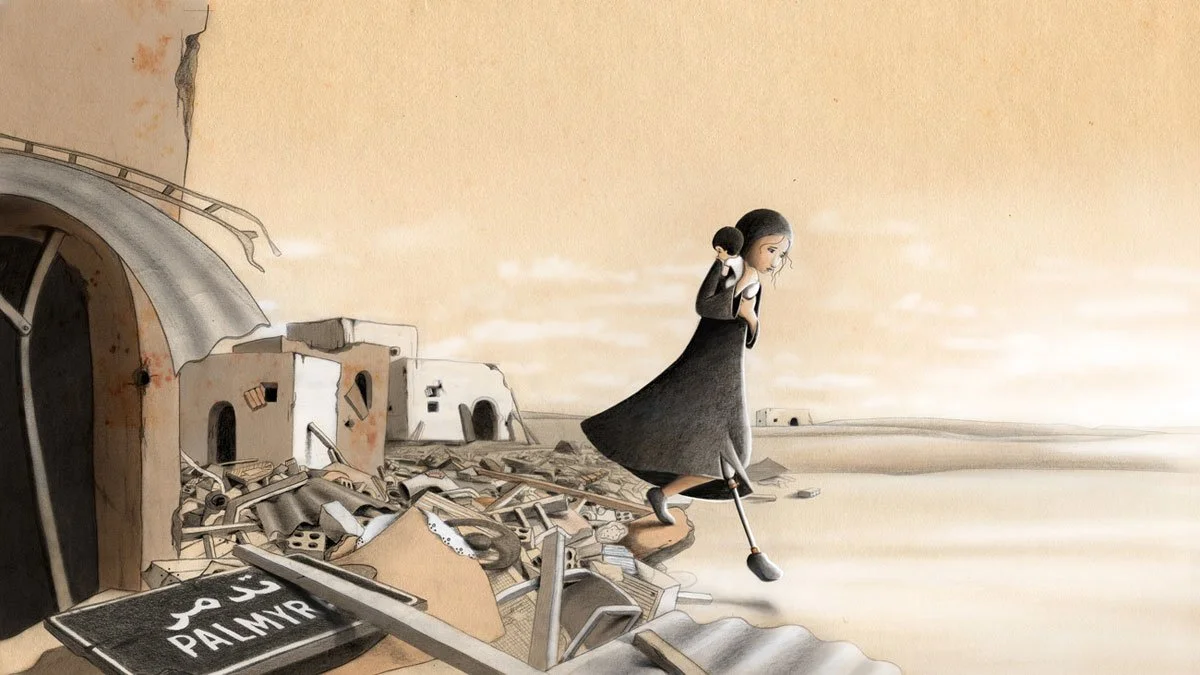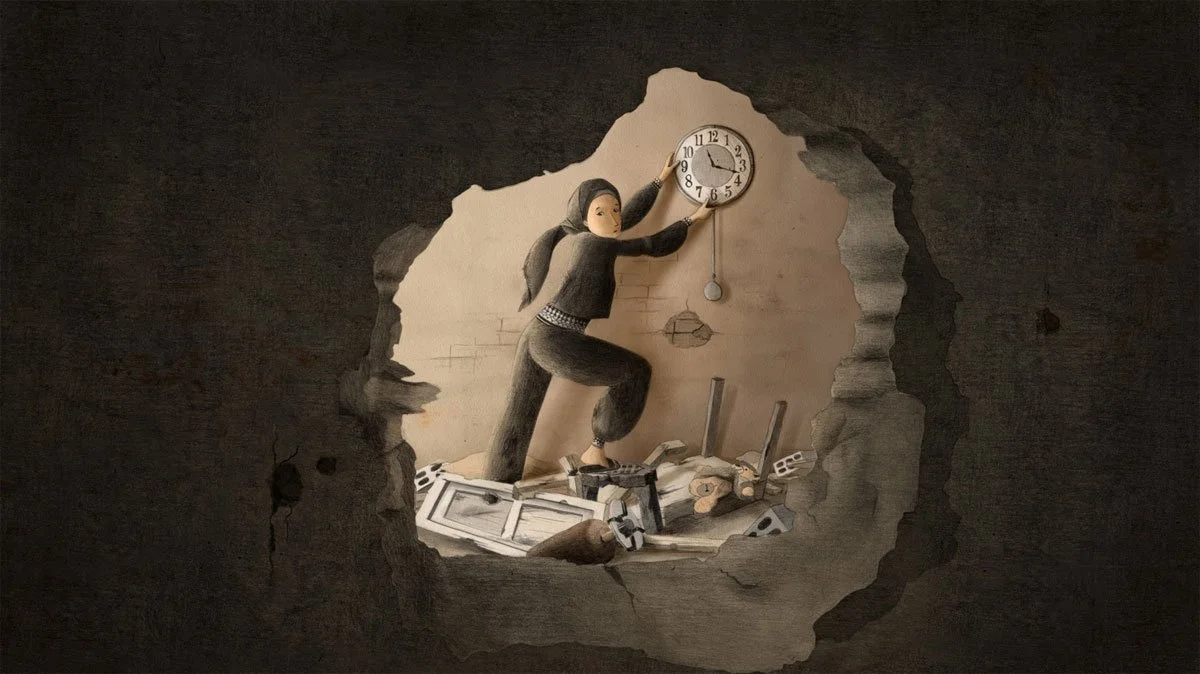Your Neighbor’s Story:
Lives of New Americans
Refugee. Immigrant. Foreigner.
These words flatten human experience and create distance. Personal stories do the opposite—they connect us. Falling in love, rebelling against a teacher, giving birth, chasing a dream, fleeing a war: in grief or in joy, we recognize ourselves in one another. We belong.
Finding Meaning Through Food, Artist: Lindsay Bolin LoweryAt the intersection of art and activism, Your Neighbor’s Story sees community as the wellspring of change. The project braids original artwork with powerful first-person narratives from individuals often forced to choose between staying in the homes they love—or saving their families.
More than a year in the making, the project grew increasingly urgent as the national debate around immigration intensified. Your Neighbor’s Story was created to spark conversation—even across differences.
Each narrative is drawn from a deep interview, paired with original artwork, and translated into English, Spanish, and Arabic.
Exhibitions and artist talks were scheduled throughout 2020. But 2020 had other plans. The pandemic shuttered galleries and gatherings. Still, the work remains.
And the stories stay with us:
—Rosa, a Honduran teenager fleeing gang threats, kidnapped and trafficked, who escaped captivity using a laundromat payphone.
—Jose, who hid under a car for hours during a gang standoff in El Salvador before fleeing the country to survive.
—Nasrin, who fell in love through an open window in Damascus, wrote her husband 600 letters, and later fled the war with nothing—but memory.
—Paco, who rose from a barefoot boy selling newspapers in Venezuela to a wealthy insurance executive and washes dishes in Maryland and prays only that his ailing wife will live.
—Iman, married off at sixteen, and surviving years of violence, who now stirs pots in Baltimore kitchens with quiet grace—feeding others as a way to heal herself.
—Maha, who keeps her homeland alive in Baltimore through food, memory, and the ache of a daughter’s distant grave.
These are stories of fracture and resilience, threaded with longing, loss, and quiet strength. They remind us that behind every label is a life.
From Rags to Riches to Rags, Artist: Emma BergmanLove Letters Through a Window, Artist: Gülnur TülüoğluA Quarter in A Laundromat, Artist: Valeria FuentesCowering Beneath A Car, Artist: Stephanie BakerA Grave Left Behind, Artist: Jianan LiuThe Afghan Women’s Writing Project
Launched in 2009, the Afghan Women’s Writing Project connected young Afghan women with U.S. authors and teachers who volunteered to help develop their literary voices, fostering a powerful community of storytelling and empowerment. To protect the writers—many from Afghanistan’s most conservative provinces—their work was published using first names only and without specific locations.
→ VIEW THE PROJECTThe Camel Book Drive
The Camel Book Drive began in 2006 after Masha visited the real camel bookmobile in northeastern Kenya while researching her novel The Camel Bookmobile. With support from authors, book groups, and readers, the drive helped expand mobile library services to nomadic schools near the Somali border, supplying books, camels, book boxes, and even a transportable tent for shade.
→ VISIT THE ARCHIVE SITETracing Memory
Starting in 2021, I traveled with my son Cheney, an award-winning photojournalist, to Starr County, Texas—one of the least-resourced counties in the U.S., and one of the hardest hit by Alzheimer’s. We listened. We photographed. We asked questions and sat quietly. And we were invited into the lives of families facing this disease with extraordinary tenderness and grit.
→ VIEW THE PROJECTDrawing on Their Lives
In 2015, while working for Concern Worldwide, Masha recruited Lebanese artist Hanane Kai to accompany her on meetings with Syrian women refugees living in northern Lebanon, and draw pieces of their lives as they told their stories. Over many hours, the women cried together and laughed together. These stories and pictures emerged. The stories and drawings were also exhibited at the Beirut Book Festival.

















